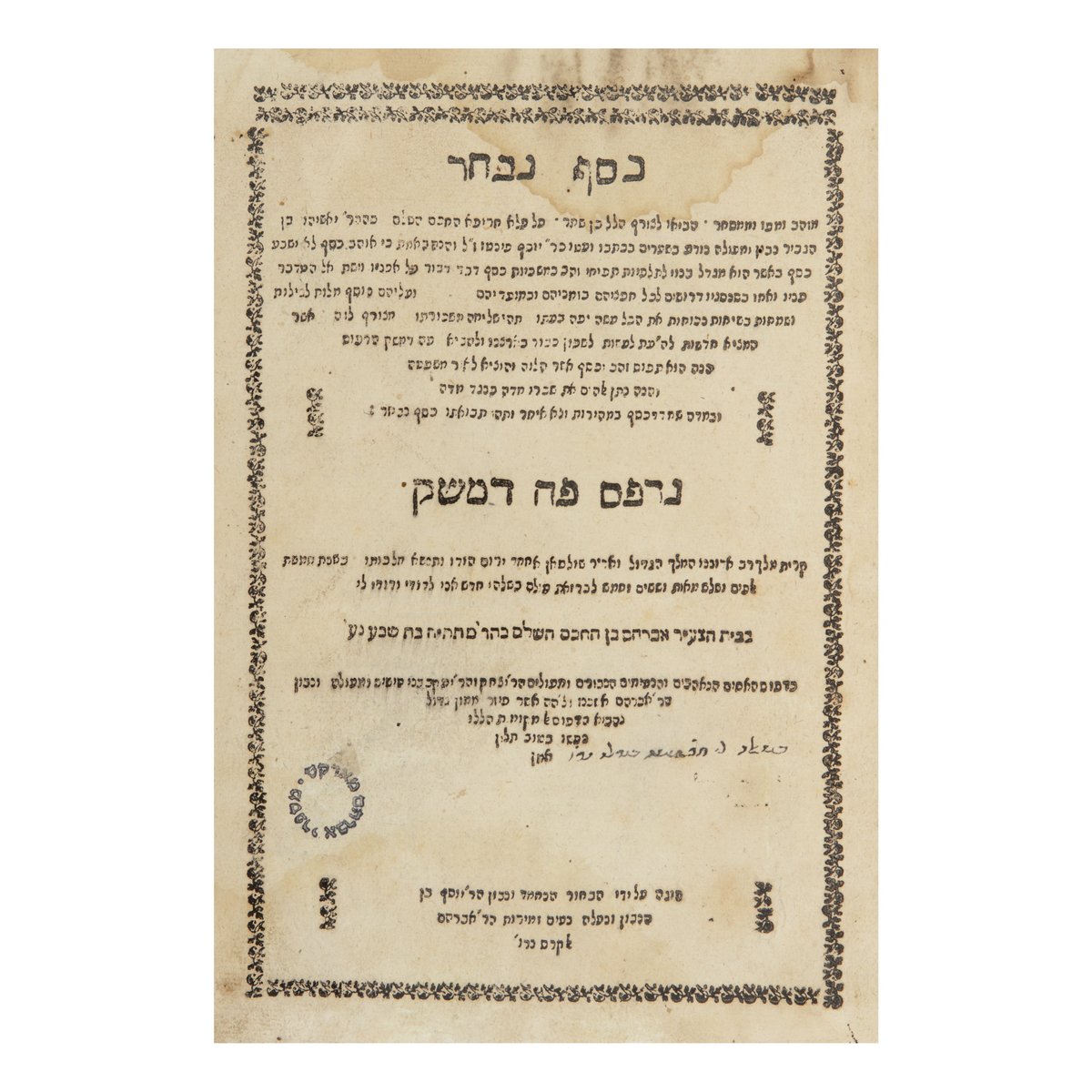
JEWISH PRINTING IN HEBREW, IN THE LAND OF ISRAEL, IN 1578.
This is third book printed in Eretz Israel, Rabbi Samuel Aripul's "Sar Shalom", printed in 1578 by Abraham & Eliezer Askkenazi at Safed (צְפַת Tsfat), the highest city in the Galilee, in what is today northern Israel. 1/
This is third book printed in Eretz Israel, Rabbi Samuel Aripul's "Sar Shalom", printed in 1578 by Abraham & Eliezer Askkenazi at Safed (צְפַת Tsfat), the highest city in the Galilee, in what is today northern Israel. 1/

In 1553, the population of Safed consisted of 1121 Muslim households, and 716 Jewish households, which rose to 945 households in 1567. There were more than 7000 Jews in Safed in 1576 when Murad III issued an edict for the forced deportation of 1000 Jewish families to Cyprus. 2/ 

A Hebrew printing press was established in Safed in 1577 by Eliezer Ashkenazi and his son, Isaac of Prague. In 1584, there were 32 synagogues registered in the town of Safed. 3/ 



Rabbi Samuel ben Isaac Aripul (died after 1586), one of the greatest preachers of the sixteenth century, was probably born in Salonika but later traveled to Constantinople, Venice, and Safed. His "Sar Shalom" is one of the most comprehensive commentaries to the Song of Songs. 4/ 

A generation later, in 1605, this same type from the Ashkenazi's press at Safed was used to print Josiah Pinto's Kesef Niḥhar in Damascus, the first ever book printed in Syria, and, until today, the only full length Hebrew book ever printed in Damascus. 5/ 

Western-style printing has been confirmed in eleven countries outside Europe in the 15th and 16th centuries: Egypt, China, India, Israel, Japan, Lebanon, Morocco, Mexico, Peru, the Philippines and Turkey. In 4 of these countries - more than a third of them - it was in Hebrew. 6/ 

A note of clarification to my tweet above: there was 16th century printing (in 1583) in the Azores, but they are usually classed as part of Europe. And there is some evidence of Portuguese printing in Mozambique, Angola and Kenya in the 16th century, but nothing has survived. 7/
The evidence for 16th century Portuguese printing in Angola (Luanda) is fragmentary and ambiguous, but it's relatively stronger than that for printing in the same era in Mozambique & Kenya. I'll post a thread about what we know of 16th cent. Angolan printing in the next week. 8/
If you have an institutional login, read Marvin Heller's article on Eliezer Ashkenazi, the first printer of Safed: 'Early Hebrew Printing from Lublin to Safed: The Journeys of Eliezer ben Isaac Ashkenazi' [Jewish Culture & History, Vol 4 2001 Issue 1] 9/
doi.org/10.1080/146216…
doi.org/10.1080/146216…
• • •
Missing some Tweet in this thread? You can try to
force a refresh

































